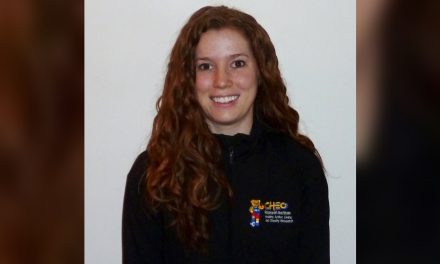HALO Senior Scientist Dr. Mark Tremblay and Post-Doctoral Fellow Dr. Michelle Guerrero were involved in a new publication titled “Few Canadian children and youth were meeting the 24-hour movement behaviour guidelines 6-months into the COVID-19 pandemic: Follow-up from a national study” just published in Applied Physiology, Nutrition, and Metabolism. Citation details and a summary of the paper are below.
Congratulations, Mark, Michelle, and team!
Moore, S. A., Faulkner, G., Rhodes, R. E., Vanderloo, L. M., Ferguson, L. J., Guerrero, M. D., Brussoni, M., Mitra, R., O’Reilly, N., Spence, J. C., Chulak-Bozzer, T., & Tremblay, M. S. (2021). Few Canadian children and youth were meeting the 24-hour movement behaviour guidelines 6-months into the COVID-19 pandemic: Follow-up from a national study. Applied physiology, nutrition, and metabolism = Physiologie appliquee, nutrition et metabolisme, 46(10), 1225–1240. https://doi.org/10.1139/apnm-2021-0354
Abstract
Daily life has changed for families due to the COVID-19 pandemic. The aim of this repeated cross-sectional study was to describe movement behaviours in Canadian children and youth 6 months into the pandemic (T2; October 2020) compared with the start of the pandemic (T1, April 2020). An online survey was distributed to parents (N = 1568) of children and/or youth (5-17 years; 58% girls) in October 2020. The survey assessed changes in movement behaviours (physical activity and play, sedentary behaviours, and sleep) from before the pandemic to October 2020 (T2). We compared these data with spring data (T1; April 2020; Moore et al. 2020; Int. J. Behav. Nutr. Phys. Act, 17:85) collected using identical methodology (N = 1472; 54% girls). We report correlations between movement behaviours and relevant parental factors and provide word frequency distributions for open-ended responses. During the second wave, 4.5% of children (4.6% girls; 4.3% boys) and 1.9% of youth (1.3% girls, 2.4% boys) met the movement guidelines (3.1% overall). Whereas, during the first wave, 4.8% (2.8% girls, 6.5% boys) of children and 0.6% (0.8% girls, 0.5% boys) of youth were meeting combined guidelines (2.6% overall). Parental support was correlated with their child’s movement behaviours (T1 and T2). Our study demonstrates the ongoing challenges for children and youth to engage in healthy movement during the pandemic. Novelty: Our large-scale national study demonstrates that children and youth were not meeting the 24-hour movement guidelines during the second wave of the pandemic. Our findings illustrate the need to protect children and youth from the collateral consequences of the pandemic.
The full publication is available here (open access).





